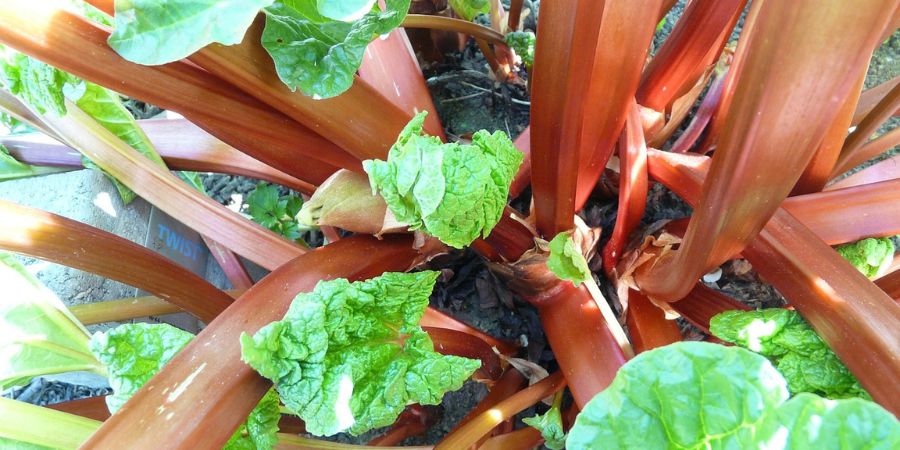Interested in growing your own rhubarb? At Applewood Nursery & Landscape Supply, we’re here to help you cultivate thriving rhubarb plants in your Minnesota garden. From selecting the right varieties to harvesting delicious stalks, here’s everything you need to know about growing and caring for rhubarb.
Choosing Rhubarb Varieties
When selecting rhubarb plants for your garden, consider these popular varieties that thrive in our unique Minnesota’s climate:
Chipman Red Rhubarb: A classic rhubarb variety known for its large, tender stalks and excellent flavor. Chipman Red rhubarb is a reliable performer in cooler climates.
Canada Red: This variety features striking red stalks that add ornamental appeal to the garden. It’s also prized for its sweet-tart flavor.
Crimson Red: Crimson Red rhubarb produces bright red stalks and has a milder flavor compared to other varieties, making it a favorite for culinary use.
Planting Rhubarb
Frist choose a sunny location with well-drained soil for planting your rhubarb plant. Next amend the soil with compost or well-rotted manure to improve fertility and drainage of the area. You will want to plant rhubarb crowns in early spring, spacing them 24-36 inches apart and burying them with the buds just below the soil’s surface.
Visit Applewood Nursery & Landscape Supply, Your One-Stop Landscape Stop!
Caring for Rhubarb Plants
Watering: Keep the soil consistently moist, especially during hot, dry weather. Avoid waterlogging the roots.
Mulching: Apply a layer of mulch around rhubarb plants to conserve moisture and suppress weeds.
Fertilizing: In early spring, apply a balanced fertilizer to promote healthy growth. Avoid excessive nitrogen, which can lead to lush foliage but fewer stalks.
Harvesting Rhubarb
First Year: Refrain from harvesting rhubarb in the first year to allow the plants to establish strong roots.
Subsequent Years: Harvest stalks by gently pulling them from the base when they are 12-18 inches long. Do not cut them. Always leave a few stalks on the plant to support growth.
Overwintering Rhubarb
Mulch rhubarb plants with straw or leaves in late fall to protect the crowns from Minnesota’s freezing temperatures. In the early spring, remove mulch once you see new growth emerging.
Common Issues and Pests
Rhubarb is relatively resistant to pests and diseases but may occasionally be affected by aphids or crown rot. Make sure to monitor plants regularly and treat pests promptly using organic methods if necessary.
Enjoying Rhubarb Harvest
Use freshly harvested rhubarb stalks to make delicious pies, crisps, jams, sauces, and more. Remember to harvest responsibly to ensure continuous growth and productivity of your rhubarb plants.
Ready to start growing your own rhubarb? Visit Applewood Nursery & Landscape Supply to explore our selection of rhubarb plants and supplies and embark on a flavorful rhubarb-growing journey in your Minnesota garden.
Visit Applewood Nursery & Landscape Supply, Your One-Stop Landscape Stop!

